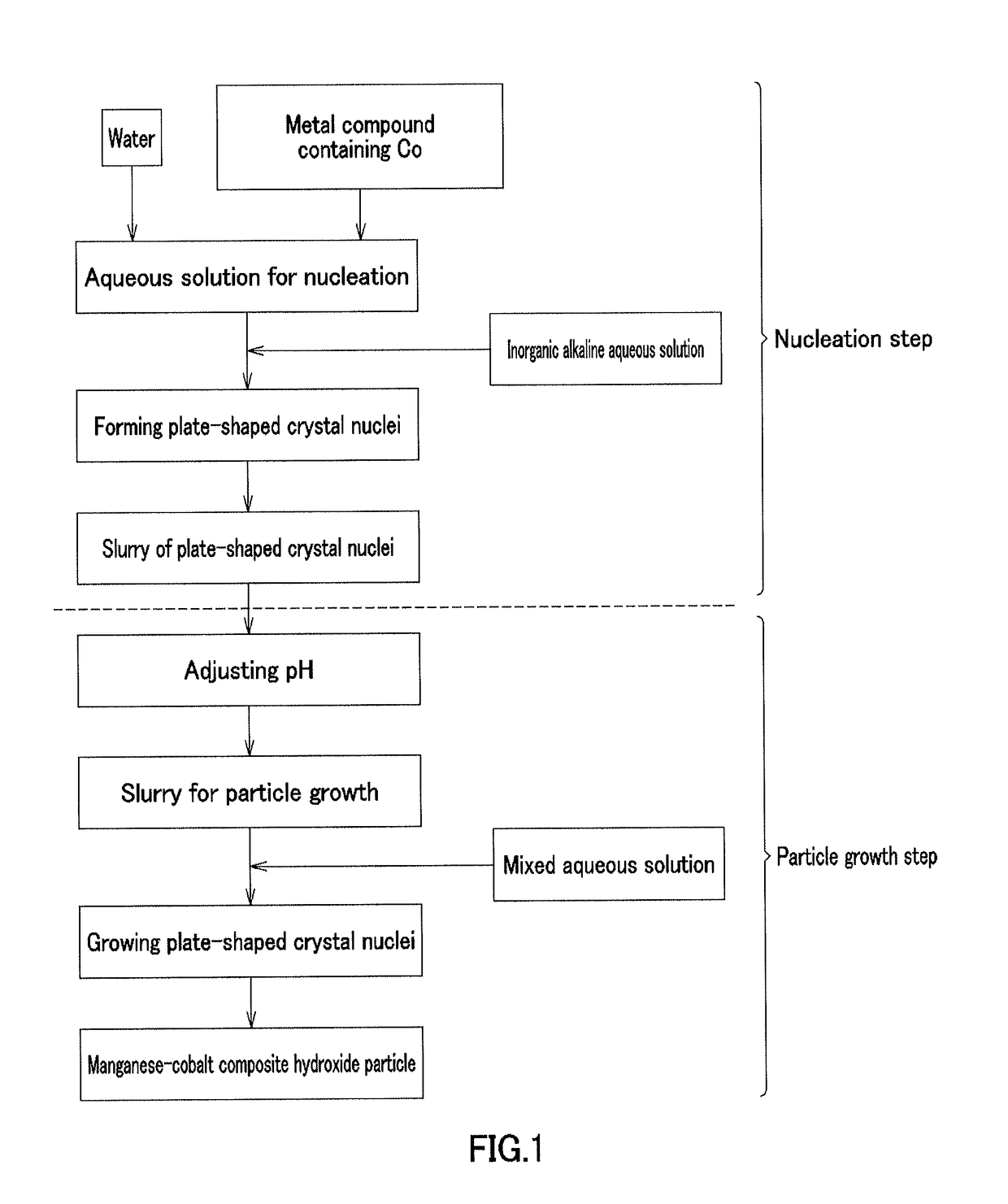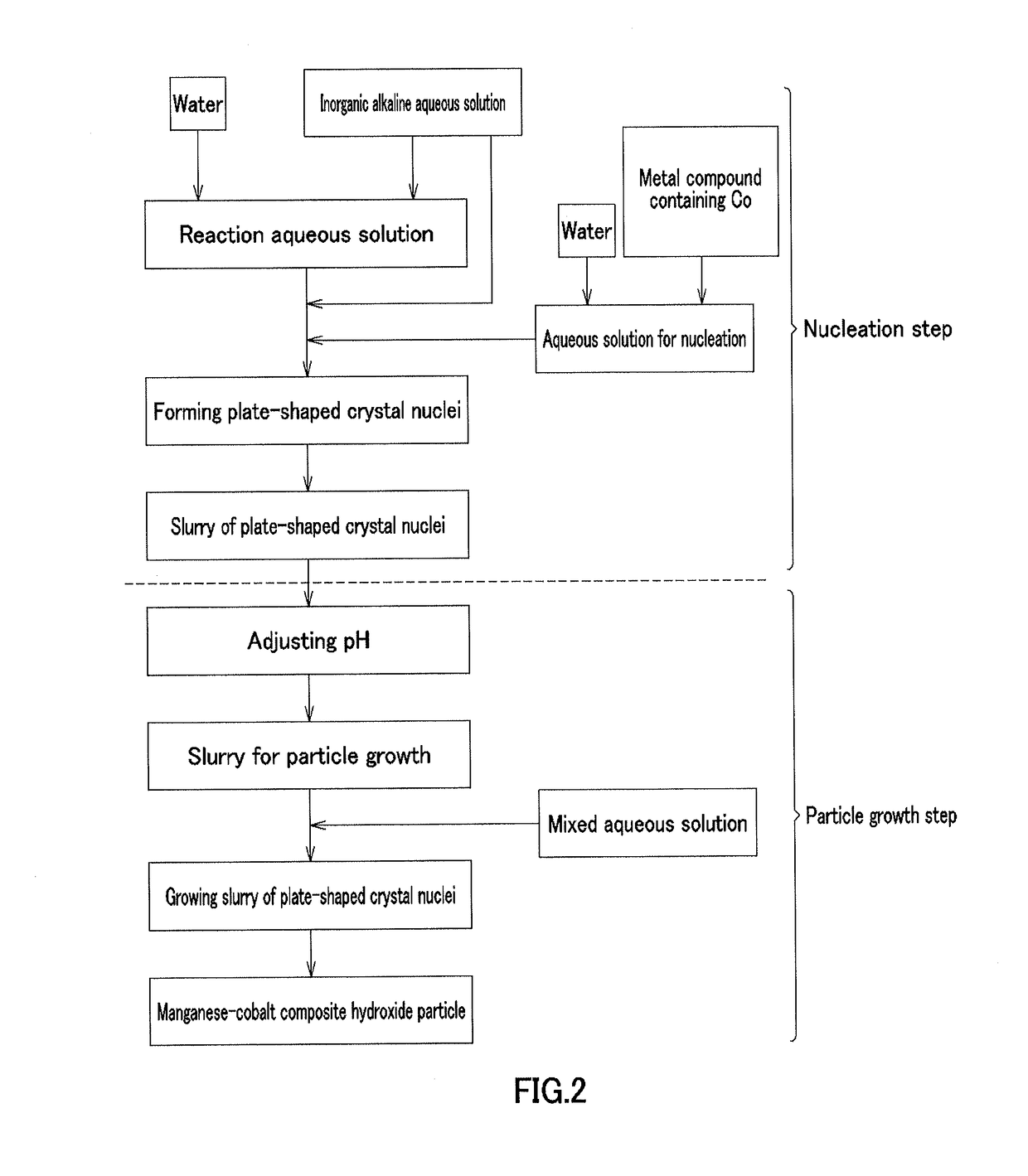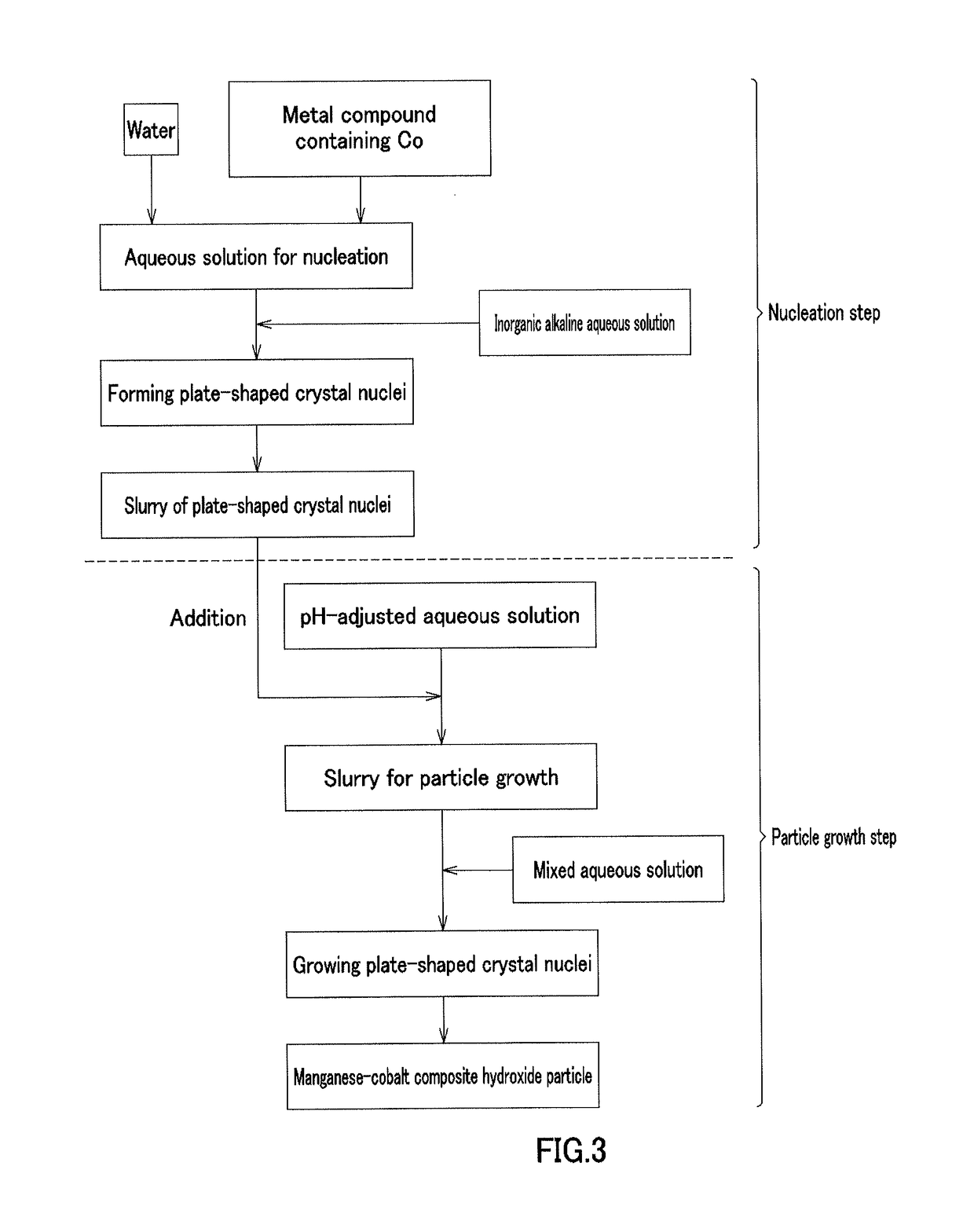Manganese-cobalt composite hydroxide and process for producing same, positive electrode active material and process for producing same, and non-aqueous electrolyte secondary battery
a composite hydroxide and manganese cobalt technology, applied in the direction of cell components, electrochemical generators, nickel compounds, etc., can solve the problems of adverse effect of output characteristic and difficulty in conventional techniques, and achieve high output characteristic, high battery capacity, and high electrode density
- Summary
- Abstract
- Description
- Claims
- Application Information
AI Technical Summary
Benefits of technology
Problems solved by technology
Method used
Image
Examples
example 1
[0213][Nucleation Step]
[0214]In Example 1, cobalt sulfate heptahydrate (Co molarity: 1.38 mol / L) and 900 mL of pure water were placed in a crystallization reaction vessel having a capacity of 5 L and equipped with 4 baffle plates, and were heated at 60° C. by a thermostatic tank and a heating jacket while being stirred at a rotation speed of 1000 rpm with an inclined paddle with 6 blades to obtain an aqueous solution before reaction. Nitrogen gas was allowed to flow into the reaction vessel to produce a nitrogen atmosphere. At this time, the concentration of oxygen in the inner space of the reaction vessel was 1.0%. A 6.25 mass % aqueous sodium hydroxide solution was supplied at 42 mL / min to increase the pH of the aqueous solution before reaction to 13 on the basis of a liquid temperature of 25° C., and then the aqueous solution before reaction was continuously stirred for 30 minutes to obtain a plate-shaped crystal nuclei-containing slurry.
[Particle Growth Step]
[0215]In Example 1, ...
example 2
[0219]In Example 2, a composite hydroxide was obtained in the same manner as in Example 1 except that a composite solution of nickel sulfate (Ni molarity: 0.8 mol / L), cobalt sulfate (Co molarity: 0.2 mol / L), and manganese sulfate (Mn molarity: 1.0 mol / L) was used as the mixed aqueous solution used in the particle growth step in Example 1. The obtained composite hydroxide had a volume-average particle size (Mv) of secondary particles of 11.2 μm, the aspect ratio was 5.4, and the average of maximum diameters of the plate-shaped primary particles projected in a direction perpendicular to the plate surfaces thereof was 1.5 μm.
example 3
[0220]In Example 3, a composite hydroxide was obtained in the same manner as in Example 1 except that a composite solution of nickel sulfate (Ni molarity: 0.4 mol / L), cobalt sulfate (Co molarity: 0.8 mol / L), and manganese sulfate (Mn molarity: 0.8 mol / L) was used as the mixed aqueous solution used in the particle growth step in Example 2. The obtained composite hydroxide had a volume-average particle size (Mv) of secondary particles of 10.9 the aspect ratio was 7.0, and the average of maximum diameters of the plate-shaped primary particles projected in a direction perpendicular to the plate surfaces thereof was 3.3 μm.
PUM
 Login to View More
Login to View More Abstract
Description
Claims
Application Information
 Login to View More
Login to View More - R&D
- Intellectual Property
- Life Sciences
- Materials
- Tech Scout
- Unparalleled Data Quality
- Higher Quality Content
- 60% Fewer Hallucinations
Browse by: Latest US Patents, China's latest patents, Technical Efficacy Thesaurus, Application Domain, Technology Topic, Popular Technical Reports.
© 2025 PatSnap. All rights reserved.Legal|Privacy policy|Modern Slavery Act Transparency Statement|Sitemap|About US| Contact US: help@patsnap.com



